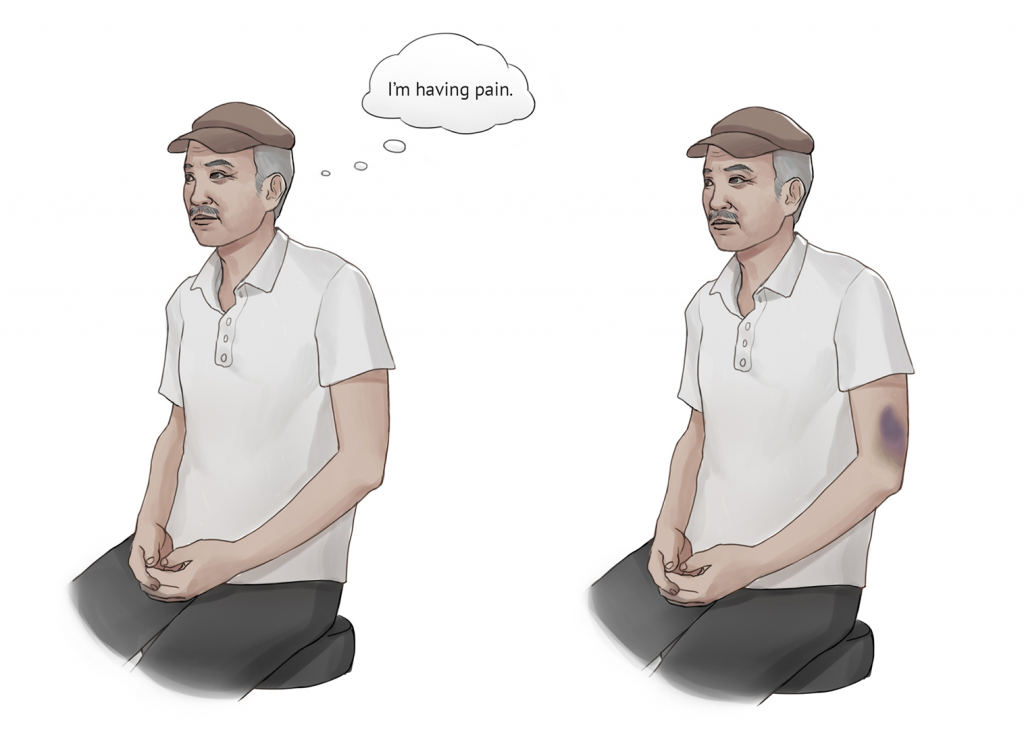Chapter 1 – Introduction to Health Assessment
Introduction to Health Assessment
Health assessment is the first phase of the nursing process and involves the collection and analysis of client data. Although it is the first phase, it is an ongoing process. Data collected as part of the health assessment process can be categorized as subjective and objective data. See Table 1.1 for an overview and examples of and data.
Table 1.1: Overview and examples of subjective and objective data – adapted from Lapum et al., https://ecampusontario.pressbooks.pub/healthassessment/
|
Data |
Example |
|---|---|
|
Subjective Information that a client or another person (i.e., family, caregiver) shares with the nurse spontaneously or in response to questions. |
|
|
Objective Information that the nurse observes when conducting a physical examination, and collecting lab and diagnostic results. |
|
Subjective data can include information about both symptoms and signs. Symptoms are something that the client feels (e.g., nausea, pain, fatigue). The nurse will not know about a symptom unless the client shares this information. Signs are observable, such as a rash, bruising, or skin perspiration. Signs can be categorized as subjective or objective because the client may tell you about their rash, and you as the nurse may also observe the rash. As reflected in Figure 1.1, a symptom is noted in the image on the left as “I’m having pain” while a sign can be observed in the image on the right, which is the bruising on the left arm.

Figure 1.1: Symptoms and signs
(Attribution: Taken from https://ecampusontario.pressbooks.pub/healthassessment/)
Age ranges are important to consider when determining normal and abnormal findings during health assessment. Depending on the source, these ranges can vary. Unless specified, we use the following terms and estimates in this resource:
- Newborns and neonates: newborns are birth to a few hours old and neonate is up to 28 days.
- Young children: clients who are 5 years and younger, including infants (28 days to 1 year), toddlers (1–2 years), and preschoolers (3–5 years).
- Older children and adolescents: clients who are 6–17 years, including older children/school-age children (6–12 years) and adolescents (13–17 years).
- Adults and older adults: clients who are 18 years and older, including adults (18 years and older) and older adults (65 years and older).
are information that the client shares spontaneously or in response to a question.
are information that is collected when performing a physical exam.

